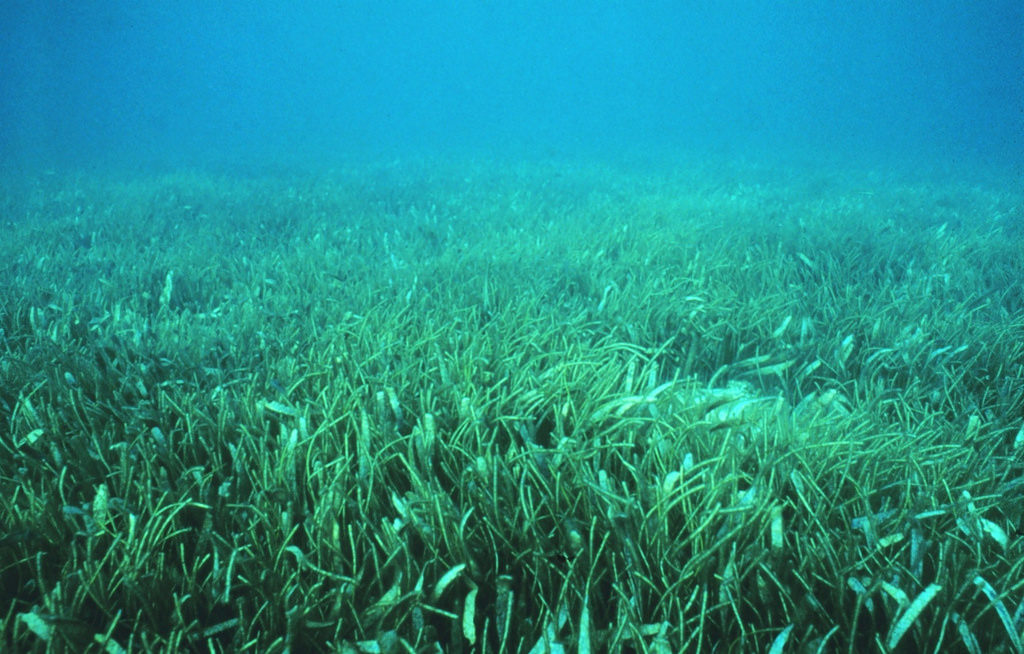Restoring seagrass meadows with the help of microbes
With many of the earth’s natural systems under pressure, scientists are seeking new ways to enhance the environment’s natural resilience to stress. This project, led by FSP postdoctoral researcher Flavia Tarquinio, is testing whether seagrass restoration can be improved by manipulating the bacterial communities that naturally coexist in their seeds, leaves and roots.

A seagrass meadow in Florida Keys National Marine Sanctuary. Heather Dine for NOAA Photo Library
Seagrasses are marine plants that provide a variety of pivotal ecosystem services. They sequester carbon very efficiently, act as nurseries for harvested fishes and provide food for dugongs and turtles. Unfortunately, seagrasses are declining worldwide as the result of growing anthropogenic pressures.
On land, inoculating seeds with beneficial bacteria can enhance plants’ abilities to overcome disease and can provide heat and salt tolerance. Despite the long history of bacterial inoculation of terrestrial plants, this is an unexplored area for marine plants.
This project will manipulate the seagrass seed bacterial endophyte community and assess their ability to enhance seagrass resilience to environmental stressors and pathogens. If successful, results will be released as a toolbox of bacterial inoculation techniques that will reduce costs and increase effectiveness of seagrass restoration worldwide.
Project leader: Dr Flavia Tarquinio (Environomics FSP Postdoctoral Fellow)
Image credit: A seagrass meadow in Florida Keys National Marine Sanctuary by Heather Dine for NOAA Photo Library, at https://www.flickr.com/photos/noaaphotolib/5077876455/in/photolist under a Creative Commons Attribution 2.0. Full terms at https://creativecommons.org/licenses/by/2.0/
